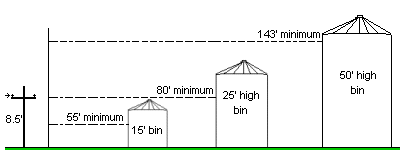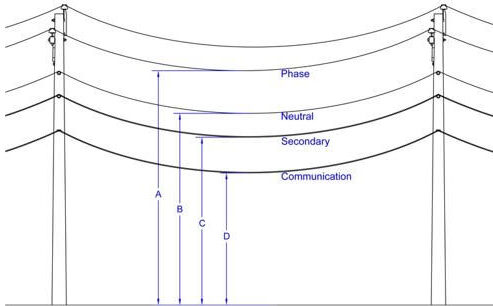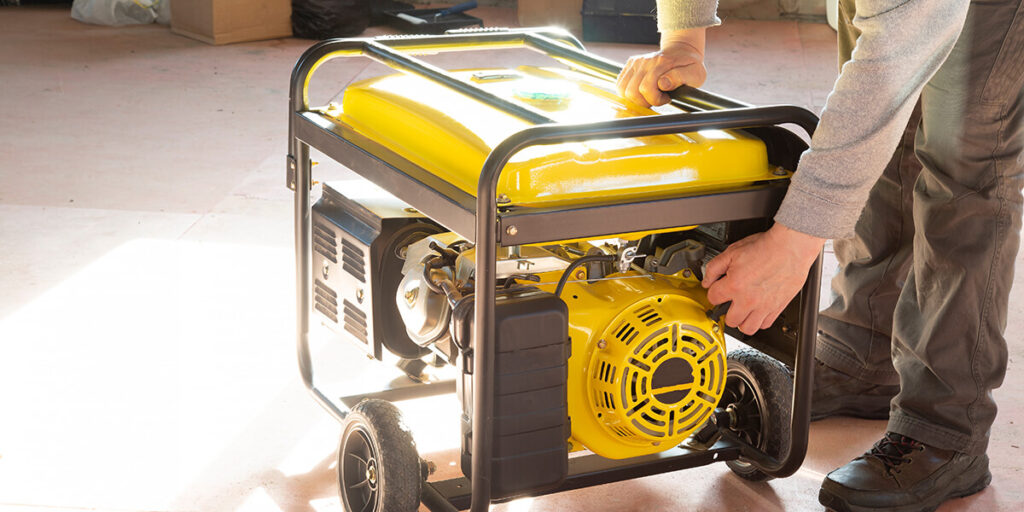Before Reporting an Outage
Before You Report an Outage check the following.
- Check to see if your neighbors are affected.
- Check circuit breakers and/or fuse boxes.
- Report the time of outage.
- If you’ve seen any flashes or any unusual noises that may identify the source of the problem.
- Have account number ready, if not, name/address in which the account is listed.
After you have done the above please call Southeastern at 1-800-333-2859.
Thank you for reporting your outage. Even if you think one of your neighbors has already reported the outage, hearing from you helps us determine the scope of the outage and accurately directs crews to the problem.
We know that any power outage is inconvenient. We apologize for the problems you are experiencing with your service and want to get you up and running as soon as possible. Southeastern does everything it can to avoid interruptions to your electric service. But sometimes, weather, equipment failures, and animals can make power outages unavoidable.
Down Power Lines
Always assume a downed wire is energized and therefore dangerous. Touching a live line or anything near it – such as a fence, puddle, car, etc. – can cause electricity to be transmitted through your body. This usually results in serious injury and sometimes death.
If you come across a downed line, leave the area immediately. A live line that has fallen across a car, fence, building or any other object can be dangerous to unsuspecting passersby. You should never touch a person, vehicle, tree or any other object that is in direct contact with a power line.
If a power line has fallen onto a vehicle, stay away and seek help immediately by calling 911. If you are in the vehicle, wait inside the vehicle until help arrives. You are safe from electrical shock as long as you stay inside the vehicle.
If you must leave the vehicle due to fire or other life-threatening reasons, leap clear of the vehicle, landing with both feet together. Don’t hold the door while leaping, and once on the ground, hop or shuffle away – do not run.
Grain Bin Restrictions
Grain Bin Clearance
Whether you’re purchasing a new grain bin or remodeling areas that contain existing ones, proximity to overhead power lines must be considered.
Safe Clearance
The National Electrical Safety Code requires
- 18 ft minimum vertical clearance from the highest point of the filling port to overhead high-voltage wires, and
- 55 ft minimum horizontal distance from the power line to the grain bin wall

Changes to landscaping and drainage work can affect clearance heights of power lines, so check these measurements regularly.
Filling Grain Bins
High voltage power lines are not insulated, so it’s important to maintain an adequate high-wire clearance when using a portable auger, conveyor or elevator to fill your grain bin.
Moving Equipment Near Grain Bins
When moving equipment, be aware of nearby power lines. Remember to maintain a 10 ft clearance to ensure safety.
If you are considering a plan for a new grain bin or reconstruction of an existing bin’s site, please call and let us assist you in maintaining a safe environment.
Height Requirements for Overhead Lines
Take special note of overhead line clearances especially in farm yards and at approaches when moving equipment in and out of fields. Southeastern tries to maintain overhead line clearances but cannot guarantee clearances if lines are lowered by storms or material failure. If you are concerned about or have a question about clearances please call us at 1-800-333-2859 and we will accommodate you in any way we can.
Utility Pole Configuration
The typical utility pole configuration that is seen running down the side of a roadway can be best described by referring to the diagram shown below.

The lowest level utility lines are typically the communications lines (telephone, cable, etc.). Electrical utility lines (phase, neutral, secondary) are at the highest level, or at the top of the utility poles.
It is important to note that while this diagram represents the usual utility pole configuration, it does not represent all utility pole configurations. For example, there can be instances where only communications lines are present or instances where only electrical lines are present.
The vertical clearances for lines A-D are described below. These minimum distances can vary depending on location, pole/line configurations, and utility line characteristics.
| Conductor | Clearance | ||
|---|---|---|---|
| A | Phase | 18.5 ft | Applies to phase wires 22kV and below. For voltages above 22kV phase-to-ground, see NESC Rules 232C and 232D. |
| B | Neutral | 15.5 ft | Applies to neutrals meeting NESC Rule 230E1. |
| C | Secondary | 16.0 ft | Applies to secondaries 750V or less meeting NESC Rule 230C2 or 230C3 (triplex, quadruplex, etc.). |
| D | Communication | 15.5 ft | Applies to cable TV, phone, fiber optic cables, etc. |
Vertical Clearances
The governing standard for clearances between overhead utility facilities and land traversed by vehicles is the National Electric Safety Code (NESC), which prescribes minimum requirements and is considered the industry standard for such clearances across the country.
NESC Rule 232 covers the “vertical clearances of wires, conductors, cables, and equipment above ground, roadway, rail, or water surfaces.”
Utilities are required to design, construct, and maintain all new facilities in accordance with this standard. With respect to existing facilities, the code is revised on a continuing basis, and although these facilities are not technically required to comply with the latest editions, most installations provide adequate clearances for the appropriate nature of the surface. Over time, these utility lines can sag below the original construction level, and the topography of the area can be altered due to changes in land usage. The public should never attempt to touch or move a utility line at any time and should always consider such lines “live” and dangerous.
When confronted with what appear to be low hanging utility lines, farmers should first contact the utility responsible for the line, be it the local electric company or phone, cable, or internet provider. If the responsible utility is not known, the local electric company should be contacted. If the facilities are shown to be out of compliance with current NESC standards, the applicable utility shall be responsible for rectifying the situation. If the facilities are shown to be in compliance with the standards, but the farmer desires the lines to be elevated to allow for access or equipment operation, the farmer shall be responsible for the cost of any necessary work on the part of the utility.

Generator Safety
Preventing Electrocutions Associated with Portable Generators Plugged Into
When power lines are down, residents can restore energy to their homes or other structures by using another power source such as a portable generator. If water has been present anywhere near electrical circuits and electrical equipment, turn off the power at the main breaker or fuse on the service panel. Do not turn the power back on until electrical equipment has been inspected by a qualified electrician.
If it is necessary to use a portable generator, manufacturer recommendations and specifications must be strictly followed. If there are any questions regarding the operation or installation of the portable generator, a qualified electrician should be immediately contacted to assist in installation and start-up activities. The generator should always be positioned outside the structure.
When using gasoline- and diesel-powered portable generators to supply power to a building, switch the main breaker or fuse on the service panel to the “off” position prior to starting the generator. This will prevent power lines from being inadvertently energized by backfeed electrical energy from the generators, and help protect utility line workers or other repair workers or people in neighboring buildings from possible electrocution. If the generator is plugged into a household circuit without turning the main breaker to the “off” position or removing the main fuse, the electrical current could reverse, go back through the circuit to the outside power grid, and energize power lines or electrical systems in other buildings to at or near their original voltage without the knowledge of utility or other workers.
Effects of Backfeed
The problem of backfeed in electrical energy is a potential risk for electrical energy workers. Electrocutions are the fifth leading cause of all reported occupational deaths. Following the safety guidelines below can reduce this risk.
Other Generator Hazards
Generator use is also a major cause of carbon monoxide (CO) poisoning. Generators should only be used in well ventilated areas.
Safety Health & Education
Find links to information for Safety, Health & Education.
